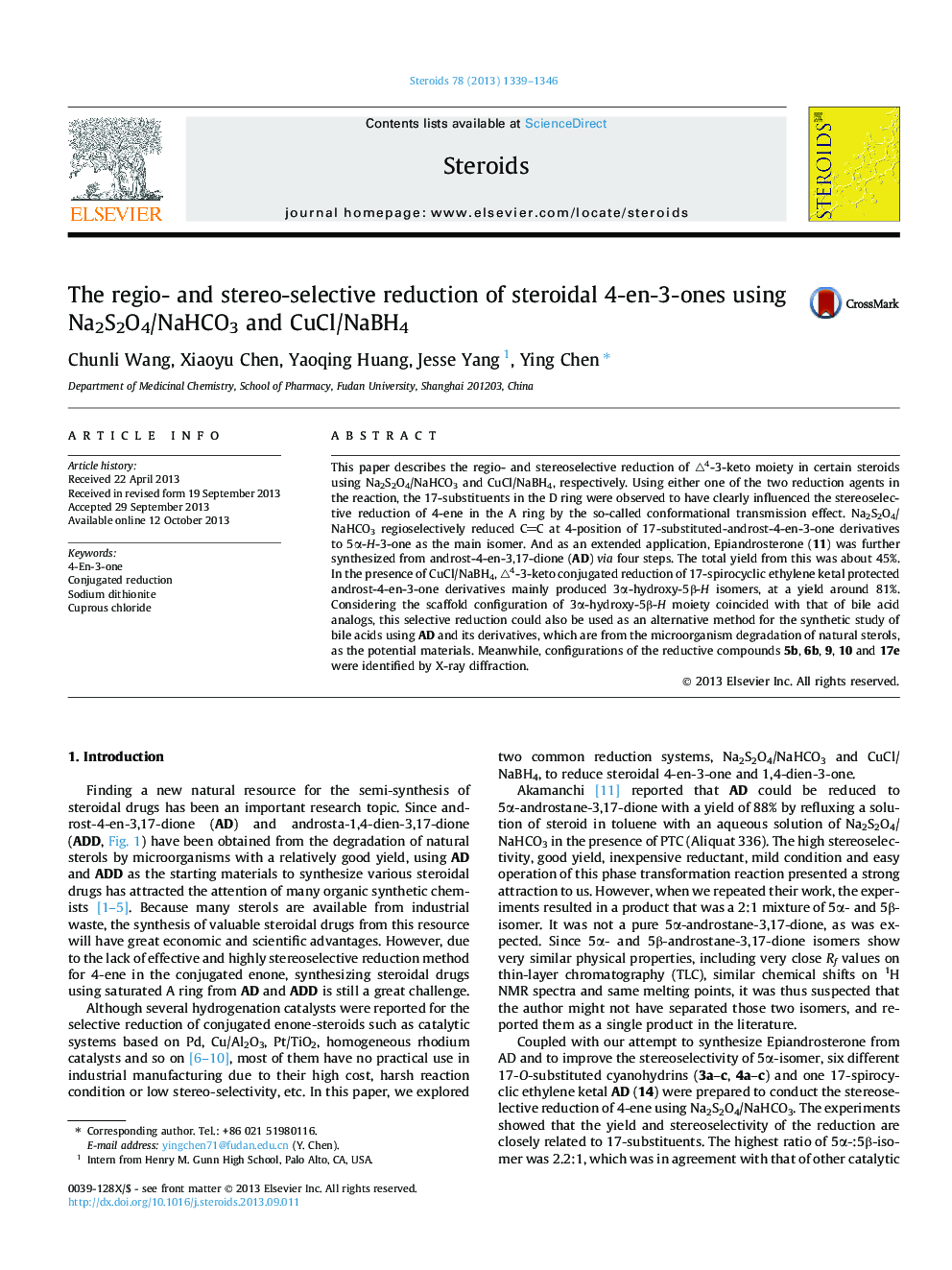| Article ID | Journal | Published Year | Pages | File Type |
|---|---|---|---|---|
| 2027767 | Steroids | 2013 | 8 Pages |
•The reduction of △4-3-keto moiety was performed with Na2S2O4/NaHCO3 and CuCl/NaBH4.•Na2S2O4/NaHCO3 mainly reduced steroidal 4-en-3-one to 5α-H-3-one isomer.•Epiandrosterone was synthesized from AD in four steps with an overall yield of 45%.•CuCl/NaBH4 mainly reduced 17-ethylendioxy protected AD to 3α-hydroxy-5β-H isomer.•Configurations of 5b, 6b, 9, 10 and 17e were identified by X-ray diffraction.
This paper describes the regio- and stereoselective reduction of △4-3-keto moiety in certain steroids using Na2S2O4/NaHCO3 and CuCl/NaBH4, respectively. Using either one of the two reduction agents in the reaction, the 17-substituents in the D ring were observed to have clearly influenced the stereoselective reduction of 4-ene in the A ring by the so-called conformational transmission effect. Na2S2O4/NaHCO3 regioselectively reduced CC at 4-position of 17-substituted-androst-4-en-3-one derivatives to 5α-H-3-one as the main isomer. And as an extended application, Epiandrosterone (11) was further synthesized from androst-4-en-3,17-dione (AD) via four steps. The total yield from this was about 45%. In the presence of CuCl/NaBH4, △4-3-keto conjugated reduction of 17-spirocyclic ethylene ketal protected androst-4-en-3-one derivatives mainly produced 3α-hydroxy-5β-H isomers, at a yield around 81%. Considering the scaffold configuration of 3α-hydroxy-5β-H moiety coincided with that of bile acid analogs, this selective reduction could also be used as an alternative method for the synthetic study of bile acids using AD and its derivatives, which are from the microorganism degradation of natural sterols, as the potential materials. Meanwhile, configurations of the reductive compounds 5b, 6b, 9, 10 and 17e were identified by X-ray diffraction.
Graphical abstractFigure optionsDownload full-size imageDownload as PowerPoint slide
